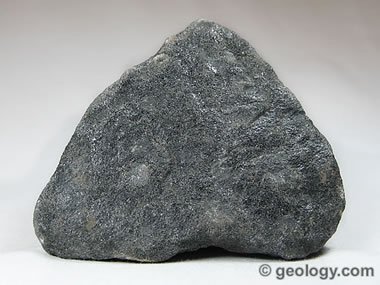Uses of Chromium | Supply, Demand, Production, Resources (original) (raw)
Home » Metals » Uses of Chromium
Facts About Chromium
Chromium Uses, Resources, Supply, Demand and Production Information
Republished from a USGS Fact Sheet from September, 2010

Chromium in paint: School bus yellow, originally called chrome yellow for the chromium pigment, was adopted for use on school buses in North America in 1939 because black lettering on the yellow buses is easy to see in the semidarkness of early morning. Image from commerce.gov.
What is Chromium?
Chromium, a steely-gray, lustrous, hard metal that takes a high polish and has a high melting point, is a silvery white, hard, and bright metal plating on steel and other material. Commonly known as chrome, it is one of the most important and indispensable industrial metals because of its hardness and resistance to corrosion. But it is used for more than the production of stainless steel and nonferrous alloys; it is also used to create pigments and chemicals used to process leather.
Chromite, the only ore of chromium, was first discovered in the United States sometime about 1808 on the farm of Isaac Tyson, Jr., just north of Baltimore, Md. Scattered deposits of chromium minerals in an area of northeastern Maryland and southeastern Pennsylvania were the source of nearly all of the chromium products in the world between 1828 and 1850. Currently, the only domestic commercial chromium supply source is from recycling, although the United States does have small chromite resources, primarily in Oregon. The Stillwater complex of Montana also hosts chromite resources associated with platinum and nickel resources.

The Gateway Arch in St. Louis, Mo., covered with a stainless steel skin made with chromium, is 630 ft (192 m) tall and 630 ft (192 m) from leg to leg. Image copyright iStockphoto / Crackerclips.
How Do We Use Chromium?
Chromium is critical in the manufacturing of stainless steel. Most stainless steel contains about 18 percent chromium; it is what hardens and toughens steel and increases its resistance to corrosion, especially at high temperatures. Because stainless steel does not rust and is easily sterilized, it is a part of many items we use in our daily lives. Some of the most recognizable of these items include kitchen appliances, food processing equipment, and medical and dental tools.
Many of the decorations on automobiles, such as ornaments, trim, and hubcaps, are chromium plated. Chromium in superalloys (high-performance alloys) permits jet engines to operate in a high-temperature, high-stress, chemically oxidizing environment. On U.S. roadways, chromium pigments are used to make the yellow lines that indicate traffic lanes. Chromium-containing pigments find their way into a variety of beauty products. Chromite is used in high-temperature applications, such as blast furnaces and molds for firing bricks, because it retains strength at high temperature.
Chromium is also vital for good health. Insufficient amounts result in glucose intolerance in humans. Organ meats, mushrooms, wheat germ, and broccoli are all good dietary sources of chromium.

Chromite: A specimen of chromite, the only ore of chromium, from the Transvaal area of South Africa. Specimen is approximately 4 inches (10 centimeters) across.
Where Does Chromium Come From?
Chromite, an oxide of iron, magnesium, aluminum, and chromium, is the only ore mineral of chromium. In nature, chromite deposits are generally of two major types: stratiform (layered) and podiform (pod shaped). Both types are associated with ultramaficigneous rocks. The world's largest stratiform chromite deposits are found in South Africa, in what is known as the Bushveld complex. This is a layered igneous intrusion containing more than 11 billion metric tons of chromite resources. Podiform deposits are found in layered igneous sequences that developed in oceanic crust below the sea floor. We can now access these resources where parts of the ocean floor have been pushed over continental rocks by tectonic forces. In the United States, podiform deposits are scattered along the Pacific Coast from the Kenai Peninsula in southern Alaska to southern California and along the Appalachian Mountains from northern Vermont to Georgia.
 |
**Did You Know?**In early 19th century Britain, Princess Charlotte used ocher paint made from chromite-derived chemicals on her carriage. The same color is seen on cars and taxi cabs in the United States today. Image copyright BLS.gov. |
|---|
Chromium: Worldwide Supply and Demand
The world's production (supply) and consumption (demand) of chromium have been influenced by the global market, as demand for mineral commodities, including chromium, has increased. Chromium is traded on the world market in the form of ferrochromium, an iron-chromium alloy.
The price of ferrochromium reached historically high levels in 2008 and then declined in 2009 with a weakening world economy. During the same time period, China's role as a chromium consumer has grown with its expanding stainless steel industry.
Ferrochromium production is an electrical energy-intensive process. Much of the electrical power currently produced is coal based, a carbon dioxide gas-producing process that is under consideration for regulation because of its impact on climate. These factors suggest that the electrical energy cost of ferrochromium production will rise in the future.
Ensure Future Chromium Supplies
World chromium reserves, mining capacity, and ferrochromium production capacity are largely concentrated in the Eastern Hemisphere. Because there is no viable substitute for chromium in the production of stainless steel and because the United States has small chromium resources, there has been concern about domestic supply during every national military emergency since World War I. In recognition of the vulnerability of lengthy supply routes during military emergencies, chromium (in various forms, including chromite ore, chromiumferro alloys, and chromium metal) has been held in the National Defense Stockpile since before World War II. Since 1991, however, changes in national security considerations have resulted in reduced stockpile goals, and inventories are being sold. At the current rate, it is estimated that these stockpiles will be exhausted by 2015. In 2009, recycled chromium from stainless steel scrap accounted for 61 percent of U.S. chromium apparent consumption, making recycled material the only domestic commercial chromium supply source.
To help predict where future chromium supplies might be located, USGS scientists study how and where identified chromium resources are concentrated in the Earth's crust and use that knowledge to assess the likelihood that undiscovered chromium resources exist. Studies of the distribution of podiform chromite deposits in ultramafic rocks in California and Oregon have helped to refine techniques used to estimate undiscovered chromium resources. These kinds of USGS studies provide unbiased scientific information to decision makers responsible for the stewardship of Federal lands, as well as data required to better evaluate mineral resource availability in a global context.
Mineral resource assessments are dynamic. Because they provide a snapshot that reflects our best understanding of how and where resources are located, the assessments must be updated periodically as better data and concepts are developed. Current research by the USGS involves updating mineral deposit models and mineral environmental models for chromium and other important nonfuel commodities and improving the techniques used to assess for concealed mineral resource potential. The results of this research will provide new information to decrease uncertainty in future mineral resource assessments.
Find Other Topics on Geology.com:
 Rocks: Galleries of igneous, sedimentary and metamorphic rock photos with descriptions. Rocks: Galleries of igneous, sedimentary and metamorphic rock photos with descriptions. |
 Minerals: Information about ore minerals, gem materials and rock-forming minerals. Minerals: Information about ore minerals, gem materials and rock-forming minerals. |
|---|---|
 Volcanoes: Articles about volcanoes, volcanic hazards and eruptions past and present. Volcanoes: Articles about volcanoes, volcanic hazards and eruptions past and present. |
 Gemstones: Colorful images and articles about diamonds and colored stones. Gemstones: Colorful images and articles about diamonds and colored stones. |
 General Geology: Articles about geysers, maars, deltas, rifts, salt domes, water, and much more! General Geology: Articles about geysers, maars, deltas, rifts, salt domes, water, and much more! |
 Geology Store: Hammers, field bags, hand lenses, maps, books, hardness picks, gold pans. Geology Store: Hammers, field bags, hand lenses, maps, books, hardness picks, gold pans. |
 |
 Diamonds: Learn about the properties of diamond, its many uses, and diamond discoveries. Diamonds: Learn about the properties of diamond, its many uses, and diamond discoveries. |